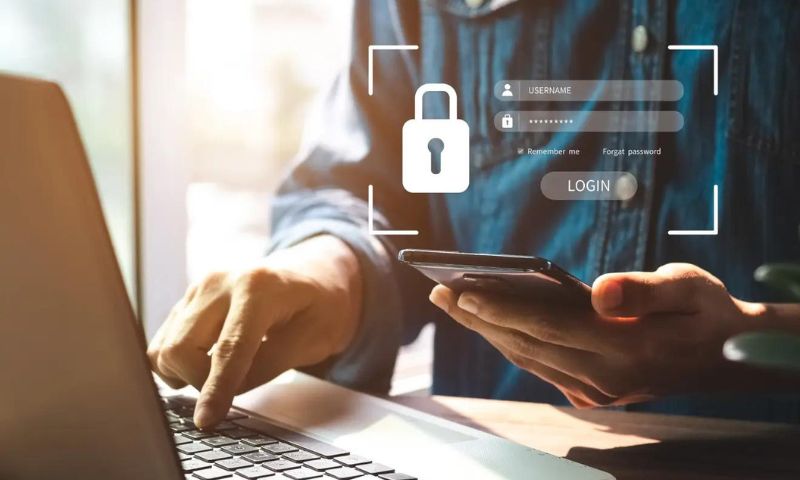Methods to prevent blockchain attacks are critical in today’s digital age, where cyber threats loom large over our virtual assets. Your blockchain is a fortress, holding precious data behind its encrypted walls. Attackers are constantly devising new siege tactics, which means your defense strategies must be unbreakable and ever-evolving. Let’s cut to the chase—I’m here to arm you with tested methods to shield your blockchain from nefarious actors. By strengthening node security, safeguarding with multisig wallets, and mastering key management, you lay the foundation of an impregnable digital stronghold. Next, ensuring your smart contracts can withstand assault and your consensus algorithms are robust, brings added layers of armor to your cyber citadel. Finally, we’ll delve into the critical surveillance—monitoring your system round-the-clock and adopting an aggressive stance with penetration testing and risk assessment to sniff out and thwart attacks before they breach your defenses. Get ready to fortify your digital fortress.
Strengthening Blockchain Node Security
Implementing Multisig Wallet Protection
Let’s tackle multisig wallet protection. What is multisig, you ask? It’s like a safety deposit box that needs two or more keys to open. This means for a hacker to steal your digital coins, they must get ahold of not just one key, but several. How many? That depends on how you set it up. This method is a smart move for anyone looking to boost their blockchain defense.
Best Practices for Key Management Strategies
Now, about managing those keys! Keys are the secret codes that keep your blockchain stuff safe. You must handle them like precious gems. Here’s a top tip: keep them off the internet. Why? Because the internet is like a busy mall and you might run into pickpockets, or in this case, hackers. So, use what we call ‘cold storage’. It’s like a safe not connected to the web.
Also, make sure you have backups. Imagine losing a key only to find you don’t have a spare! That’s a no-go. Store backups in different spots. This way, you keep your blockchain stuff safe and sound, no matter what comes your way. And always, always double-check where you send your coins. One wrong move and they are gone for good. Better safe than sorry, right?
Remember these strategies. They’re your shield against the sneaky hackers out to cause trouble. If you do your part, your digital castle will stand strong. Keep those coins locked up tight!
Elevating Smart Contract Reliability
Enhancing Smart Contract Safety with Code Audits
Smart contracts run the show on blockchain. Think of them like the rules in a game. If they’ve got holes, things can go bad, real bad. This is where code audits jump in. Experts comb a contract’s code before it goes live. They spot the flaws, like a keen-eyed coach finding weak spots in a play.
Why audits?
A good audit cuts risks. It finds bugs so they don’t find us! A glitch in a contract could mean lost money or a broken system. No one wants that. A solid audit is like a suit of armor – it defends your contract from attacks. Think about your house – you’d want the locks checked, right? It’s the same with code. We want it safe and sound.
Avoiding Common Vulnerabilities in Decentralized Applications (dApps)
Hackers love targeting dApps. Why? They can be like doors left unlocked. But we can shut them tight! Using known best practices, developers make it tough for hackers. They keep software updated and get rid of old, risky code.
Bulletproof your dApp
Keep your guard up by testing a lot. Check how your app acts with lots of users and when things go wrong. Plan for trouble. Make sure your dApp can handle it when things don’t go as planned. Then, test even more.
Check who’s talking to your dApp. If it’s someone or something you can’t trust, don’t let them in. Just like you wouldn’t open your door to a stranger, don’t let unknown users ruin your dApp party.
Node talk
Last up, chat with your nodes. Your dApp’s nodes are its ears and eyes. Be picky about who your dApp listens to. Nodes must prove they’re legit. If bad players mess with one node, others can still keep things right. It’s teamwork at its best!
With these tricks, your dApp stays tough and ready to shine. A safe dApp means happy users and a blockchain that we can all trust. Together, we build a digital fortress, one block at a time.
Methods to Prevent Blockchain Attacks: Fortifying Your Digital Fortress
Enhancing Consensus Algorithm Robustness
Let’s dive into blockchain’s heart, the consensus algorithm. It’s like the rules of a game that all players agree to follow. This keeps our blockchain fair and secure. Think of a game where no one can cheat. That’s what a good consensus algorithm does.
Analyzing Proof of Work Versus Proof of Stake Security
What’s safer, Proof of Work (PoW) or Proof of Stake (PoS)? Imagine having two safes. One needs a big, heavy key to open (that’s PoW). The other just checks if you own a special token to let you in (that’s PoS). Both have their perks, but also their own risks. PoW makes you work hard to add to the blockchain, like solving a puzzle. PoS, though, asks that you put some skin in the game, like betting your own coins.
Both systems aim to stop cheaters. But guess what? Sometimes PoW can use too much power. And PoS? You need a lot of coins to play. Knowing this helps us pick the right safe for our valuable blockchain.
Safeguarding Against 51% Attacks in Varied Consensus Models
Now, let’s talk about how to guard against 51% attacks. This is when someone gets more than half the network’s power. They could try to damage our game. They might cancel transactions or spend coins twice. It’s like someone taking over a game’s rulebook and going wild.
How do we stop this? We can mix things up, make rules harder, and keep checks in place. It’s like having a big group of friends watching every move in the game to call out cheaters. This helps stop anyone from taking over and keeps the game nice and fair.
To build up our defenses, we make sure we’ve got a wide and varied group in charge. We can also check all the players’ moves. This is where cybersecurity for distributed ledgers steps in. Think of it as a guard that watches over our digital fort, 24/7.
Smart folks work on enhancing smart contract safety too. They make the mind-boggling code that runs things airtight. This stops sneaky bugs that can mess up our game.
And don’t forget about multisig wallet protection and key management. These are like secret handshakes and password puzzles that keep bad guys out of our coin stash.
The great thing is, we’ve got tools for spotting when something funky is going on. Blockchain monitoring tools are our lookouts. They squint at the horizon and sound the alarm if pirates sail close. That way, we can batten down the hatches in time.
So, defending blockchain integrity isn’t just smart—it’s vital. We keep sharpening our swords, looking out for new tricks by villains. Because, in this game of high-tech treasure, staying safe means staying ahead. It’s all about having a strong fortress and a crew ready for anything. That’s how we sail these wild crypto seas without fear.
Comprehensive Blockchain System Monitoring
Utilizing Blockchain Monitoring Tools for Anomaly Detection
Watching your blockchain like a hawk stops the sneaky bugs. Use great tools to see odd stuff fast. Imagine an alarm that goes off when things look fishy in your blockchain. It’s like having a guard dog for your data. Every time a transaction seems out of place, you get a nudge to look closer.
These tools can tell if someone’s trying to mess with your blockchain. They work non-stop, scanning for signs of hackers. This is your shield against crypto gremlins. Got a pile of data? No sweat. These tools chew through it to find what doesn’t belong.
But it’s not enough to just have the tools. You need to set them up right. Make them strict but smart. They need to know the difference between a blip and a blitz. With these, your digital treasure stays locked tight. Using them right means you sleep sound at night.
Conducting Penetration Testing and Risk Assessments for Proactive Defense
Think like a hacker to beat a hacker. That’s what penetration testing is all about. You poke and prod your blockchain to find weak spots. Then you fix them before the bad guys do bad things. You’re being your own detective, hunting for clues that lead to the leaks.
Risk assessments are your treasure map to trouble. By checking your blockchain from top to bottom, you make a list of where you could get hit. Then, you make a plan. Your plan turns the possible oops into a no-way, not-today. By planning, you stop problems before they ever start.
See, blockchain is not just ‘set it and forget it.’ It’s like a garden. You need to check on it, or the weeds take over. In the cyber world, those weeds can be costly. We’re talking real money on the line. That’s why doing these tests is like having armor for your coins.
These tests are not just once and done. Nope. It’s a do-again-and-again thing. Each time, you learn more. With each test, you build a stronger wall around your blockchain.
By doing these two things, you stand guard over your digital kingdom. You’re not just waiting for trouble. You’re out there looking for it and shutting it down. That way, your blockchain stays safe and sound.
In this post, we delved into vital steps to boost blockchain security. We covered how using multisig wallets and smart key management keep your nodes secure. We also talked about making smart contracts safer with code reviews and knowing the weaknesses in dApps.
Looking at consensus algorithms, we compared proof of work and proof of stake. We also explored how to avoid the dreaded 51% attacks. Lastly, we showed how monitoring tools and testing can help catch risks early.
To sum it all up, keeping your blockchain tech safe is about being smart and proactive. You’ve got to use the right tools and know-how to protect your system. Remember, the tips we discussed are your best bet for a tight, secure blockchain setup. Stay safe and always keep ahead of the game!
Q&A :
What are the best practices to secure blockchain technology from potential attacks?
Blockchain technology, while inherently secure, is not completely immune to threats. To strengthen security, it’s essential to implement best practices such as regularly updating protocol software, employing advanced cryptographic methods to safeguard transaction data, conducting thorough security audits to identify vulnerabilities, and using multi-signature technology to add an additional layer of security for transactions.
How can we prevent attacks on a blockchain network?
Preventing attacks on a blockchain network involves a multi-faceted approach. Key measures include deploying robust consensus mechanisms to deter 51% attacks, network monitoring to promptly detect suspicious activities, and maintaining a decentralized structure to reduce the risk of a single point of failure. Additionally, educating network participants on security protocols can greatly enhance the overall security posture of the blockchain.
What strategies are used to mitigate the risk of blockchain double-spending?
Double-spending on a blockchain represents a significant risk, where the same digital asset could be spent more than once. To combat this, blockchains utilize confirmation mechanisms like confirmations for each transaction. Networks like Bitcoin encourage miners to wait for a certain number of confirmations to ensure a transaction is added to the blockchain. Implementing a Proof-of-Work or Proof-of-Stake consensus algorithm also helps to prevent double-spending by making it more difficult to alter confirmed transactions.
How to handle Smart Contract vulnerabilities to prevent blockchain exploits?
Smart Contract vulnerabilities are a critical concern for blockchain security. To address this, it’s crucial to conduct comprehensive audits and testing of smart contracts before deployment. Developers should adhere to established coding standards, use established libraries with proven security, and keep smart contracts as simple as possible to limit the attack surface. Additionally, regular security reviews and updates post-deployment can help catch any newly discovered exploits or vulnerabilities.
Can increasing Blockchain network’s complexity help in preventing cyber attacks?
While increasing a blockchain network’s complexity can introduce new security layers, it can potentially open up more vectors for attacks if not managed properly. A well-balanced approach is essential where the focus should be on employing complex cryptographic algorithms to secure data while maintaining the network’s transparency and ease of use for legitimate users. It is vital that the enhancements in complexity do not compromise usability or overshadow the core principles of blockchain technology, such as decentralization and immutability.



